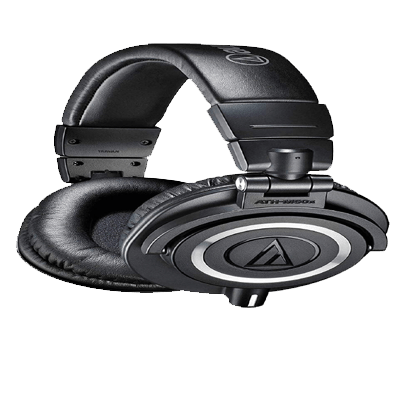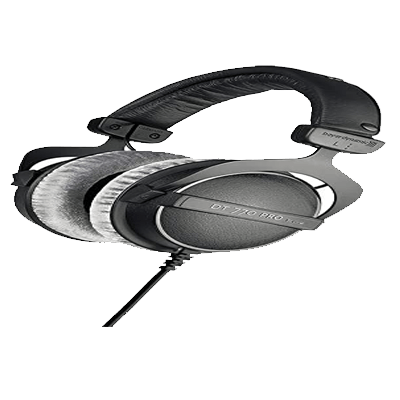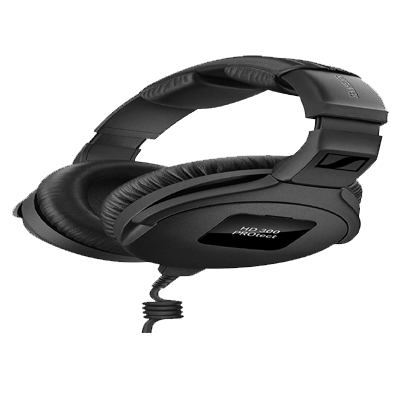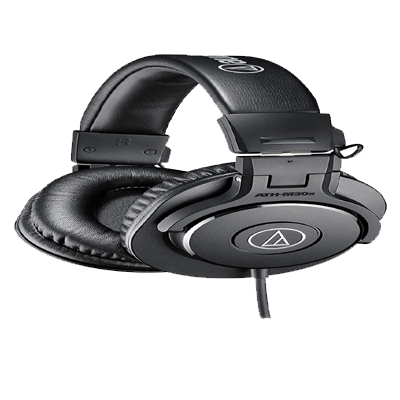Aviom is a professional audio equipment manufacturer that specializes in personal monitoring solutions. Aviom, headquartered in West Chester, Pennsylvania, manufactures distributed audio networking equipment that uses A-Net, a unique digital audio transport technology based on the physical layer of Ethernet and transported via Category 5 cables terminated with 8P8C connectors.
Aviom products may be found in live sound, broadcast, recording studios, houses of worship, theatres, schools, and post-production facilities worldwide. Some applications are interfacing with stage monitoring, headphone monitoring, and in-ear monitoring for the finest Aviom system headphones.
However, there is no such thing as a free lunch regarding noise reduction. The more outside noise you wish to block out, the closer the phones have to seal against your skull, which may be very painful after a while.
We’ll be discussing the best headphones for the Aviom system.
The Buying Guide for the best headphones for Aviom System:
Consider these factors before buying the best headphones for the Aviom system.
Sound Clarity
Do you care about sound quality? Do you enjoy listening to music that sounds like it’s being played right before you? If this is the case, you should investigate the balance of bass and treble on earbuds and headphones. Some higher-end versions may even allow you to balance sounds, giving you the luxury of perfectly tuning your music to your preference.
Brand or Appearance
Some headphones and earbuds are designed to utterly wow. Typically, these contain fashionable characteristics or are manufactured by a particular company. Of course, you should always do your homework before purchasing, but if you want to stand out or are committed to one firm, you may want to lean towards fashion or look.
Wireless or wired
Some individuals enjoy the convenience of wireless earbuds and headphones. Others want systems that can be connected to their iPhones or other gadgets. While one may not consistently outperform, the other wireless versions are handier. However, you should be aware that wireless earbuds must be stored appropriately, so they do not become separated.
Also Read: Best Headphones for Rock Music
Budget
Finally, we arrive at one of the most critical considerations: price. The difference between the lowest and highest priced headphones and earbuds will astound you. You need to stick to a budget, but be wary of things that appear too inexpensive. They frequently don’t operate properly and have to be replaced quickly, making them far less valuable than you expected.
Learning how to buy the appropriate headphones or earbuds takes some practice. Keep your receipts and comprehend the manufacturer’s warranties if you purchase something that is a disappointment. You may then get your money back and start over.

Pros
Cons
Let’s begin by clearing stuff out of the way. The Audio-Technica ATH-M50 Professional Studio Monitor Headphones are excellent overall and a fantastic pair of headphones for the money. To begin with, they are well-made and have a formal approach that seems and feels like it will serve for a long time. They include a single thick cable that ends in a heavy-duty, reinforced plug.
Although it’s important to note that the modest soft case these headphones come with is effectively just a bag, the thick, cushioned ear cups rotate on two axes, and the headphones fold flat for storage. The sound of the ATH-M50 headphones is their differentiating factor, not the build quality.
These headphones have a superb sense of balance, provide remarkable clarity, and have substantial but not overpowering bass. For those who want headphones with a booming low end and a lot of thumps, that bass may not be large enough, but I tend to choose headphones that are a little more comfortable, accurate, and well-balanced.
The ATH-M50 headphones include “proprietary” 45mm large-aperture drivers with neodymium magnet systems, according to its technical specifications. The headphones sounded great with every type of music I played through them; they were made to work well with just about every kind of music, as well as movies and video games, for that matter.
Similar to more costly, higher-end headphones, these compel you to listen to older songs in your soundtracks that you haven’t heard in a while only to experience enhanced audio quality. For closed-back headphones, the sound is rich, smooth, and open with tonnes of detail, as I’ve already mentioned.

Pros
Cons
Beyerdynamic’s DT770 Pro 80 Ohm has always piqued my interest. It has a longstanding experience in the audio industry. Many studio experts and producers believe in it. Online music enthusiasts gush over them.
The soundstage and the pace are the first two things that immediately stood out to me with these. I’ve never experienced a closed-back headphone with a soundstage as expansive as the DT770 Pro 80. The drivers’ speed is another amazing aspect.
In short, speed in headphones refers to how rapidly the tiny speaker can play a sound, vibrate, and then reset to the neutral position, as well as whether or not certain frequencies remain to dart about in the cup.
Online listening tests and measurements confirm that the DT770 is just as quick as headphones that cost several times as much. It offers an immediate attack, swift decay for all frequencies, and superb detail rendering. Sounds are created with a tight, fast punchiness, and they don’t stay in the cups for long.
The DT770 Pro 80 Ohm is designed like a substantial, muscular object. Because, in a way, that is what it is. The headband is solid metal and has a detachable pad connected to it with snaps. The ear cups are composed of tough, textured plastic that mimics the cover for a musical instrument. Huge plush velour cushions covering the enormous ear cups offer enough isolation and all-day comfort.
Ten feet of the cable are straight, non-detachable, and long. Twitch. It finishes in a 3.5mm connector, and the packaging contains a 6.3mm converter. The cable is formed of a pleasant, flexible material, and working with it is rather simple. I’ve never had any difficulty using these headphones at a coffee shop by just coiling the cord a little. But unless you’re willing to dedicate a pocket to the cable, you wouldn’t want to bring these about.

Pros
Cons
Sennheiser’s HD headphone line is often used for DJ, live, broadcast, and studio applications. A strong focus is placed on effective noise insulation in the closed HD 300 PROtect variant. Outside noise is efficiently silenced, and the sound is transmitted outside.
The HD 300 PROtect is a conventional wired headset. Although the L/R labels should have been more apparent, the one-sided cable routing is on the left. A short spiral is attached to the top of the cable, which is replaceable and secured against accidental removal by bolts.
The cable connects to a 6.3 mm adaptor soldered into a 3.5 mm jack on the opposite side. At least for instrumentalists, the connecting cable is 1.5 meters in length for professional use. Regarding the fit, nothing but positive things can be said; the HD 300 PROtect sits perfectly, doesn’t slip about, and exerts adequate pressure on the head, which is especially helpful for the occasionally exhausting studio job.
At the same time, it prevents sound from escaping into the environment while providing effective external noise attenuation for an audible monitor signal. The HD 300 PROtect’s claimed “NoiseGuard” technology is a unique feature.
When the NoiseGuard is turned on, the HD 300 PROtect produces a balanced sound. Tonality and dynamics are just as audible here as deep bass, which maps the bass spectrum precisely and without highlighting.
Voices and solo instruments have a delightful closeness through an excellent detail resolution, but the vital core area is clear, constant, and warmly portrayed. Finally, the headphones avoid harshness by being fairly rounded even at higher altitudes. More warmly than analytically clearly, the tuning is overall.
Also Read: Best Headphones for Doom Metal

Pros
Cons
Compared to the more broad class of Bluetooth headphones, the home theater-specific wireless headphones segment is a niche market. But Sennheiser keeps supplying it with top-notch products. The Sennheiser RS 175 is a strong pair of wireless headphones with a transmitter and charging station specially designed to receive digital and analog inputs from your home theatre equipment.
It is intended for usage at home and does not support Bluetooth or any other mobile-friendly specifications. Bright highs and rich lows are incorporated into the sound signature, and extra bass can be introduced. The Sennheiser RS 175 has a sleek and understated all-black aesthetic appearance.
The over-ear earpads are well-padded. However, the padding on the headband is split into two portions to make room for the connection point for charging. Controls for changing the volume, the bass mode, and the surround settings are placed on the exterior panel of the right earcup.
Along the side of each earcup is an indicator LED and a power button; switching on the headphones also lights a hand on the charging cradle/transmitter. The cradle/transmitter is neither unattractive nor a piece of art in and of itself. The headphones are kept in place by a convenient, upright tower with controls for Surround and Bass settings and a status LED on the front panel.
The back of the device offers a 3.5mm analog signal for sources like a mobile device or computer and an optical port for syncing digital audio from your home cinema system.
The two inputs are accessible through a switch on the back panel, and cables are available for each. However, the 3.5mm cable’s connector might be too big for your phone or tablet case. Sennheiser asserts a battery life of up to 18 hours; however, how long they last will depend mostly on how loud you listen to the music.

Pros
Cons
Those hunting an excellent pair of over-ear studio monitors should consider the Audio-Technica ATH-M30x. Even though the frequency response is not perfectly accurate, it functions pretty well in almost all conditions. Its candidacy is assisted by the exceptional comfort and sound quality.
This is a plug-and-play studio headset that you have. The ATH-M30x has no embellishments other than a vinyl cinching bag, including the non-removable extremely long three-meters of wire with a 3.5mm connector.
It resembles the ATH-M40x and the more expensive ATH-M50xBT2 in appearance. The headbands have a similar appearance and texture with the familiar Audio-Technica logo over the top.
In short, the ATH-M30x promises to be a more inexpensive, slimmer version, which it is. The ear cups’ and the arms’ cushioning seem thinner, but it isn’t necessarily bad; it’s merely pragmatic. For what would often be considered monitoring headphones, the clamping force looks to be more flexible.
The ATH-M30x has metal reinforcement in the headband and is primarily made of plastic, which makes the device lightweight. The arms do not articulate. However, the ear cups may be scrunched up substantially.
The ATH-M30x feels cozy without overheating if you listen for less than two hours. The lengthy cable is perfect for encircling a drum set. But if that cable breaks, you must fix it because you can’t take it apart without a soldering iron.
The ATH-M30x depends solely on passive analog isolation, like most headphones lacking (ANC) Active Noise Cancelling technology. The ATH-M30x has a pretty precise frequency response. Due to the nature of our objective testing, the answer is that it performs exceptionally well. The M30x offers a studio-style sound since the headset is generally used as a pair of studio monitors.

Pros
Cons
For a good reason, the Sony MDR-7506 has been a brainer gadget for many audio professionals. Even though it doesn’t have many luxuries or frills, the headphones sound excellent and perform the job.
The broad headband of the MDR-7506 evenly distributes weight, making it easy to wear for extended periods. The ear cups are detachable, and the cable’s coiling avoids damage from tangles. I’ve heard several accounts of people using their MDR-7506 headphones for at least ten years.
After a few years of usage, the earcups usually degrade. At first sight, the build quality doesn’t seem very excellent. The Sony MDR-7506 does not contain a lot of plastic, but they appear to be delicate. However, these are far tougher and more durable than their outward appearance may seem. There is no doubting the comfort of these headphones. Long-term wear is intended for the Sony MDR-7506 headphones.
The headband of the Sony MDR-7506 headphones is of a reasonable size. They suit heads of most shapes and sizes well. We particularly like that these headphones don’t feel overly constrictive or exert excessive pressure on your head or ears.
There isn’t any Bluetooth or other contemporaneous connectivity offered with the Sony MDR-7506 headphones; they are wired only. The 1.8 m coiled cable linked to them, which can extend to a full 3 m, is one of the few characteristics they do have.
The line is extremely high quality and ideal for a studio setting. It must be, as the cable cannot be removed; therefore, as was already stated, changing it will be quite difficult. A 3.5 mm converter is provided with the headphones, which is always a helpful addition. A comfortable carrying case is also included. Additionally, the Sony MDR-7506 may be folded conveniently, permitting storage in a tiny area.
Also Read: Best Headphones that don’t leak Sound
Conclusion
In this article, we have told you about all the best headphones for Aviom systems. These headphones are ideal for use in offices, homes, and DJs. Some of these are wireless portable headphones for carrying purposes. These headphones are affordable, high quality, and the best for Aviom systems. Although these headphones don’t have all luxuries, they provide you with premium acoustic quality.

